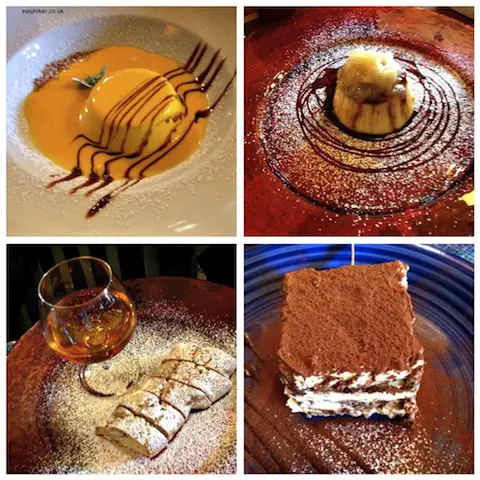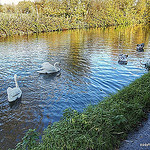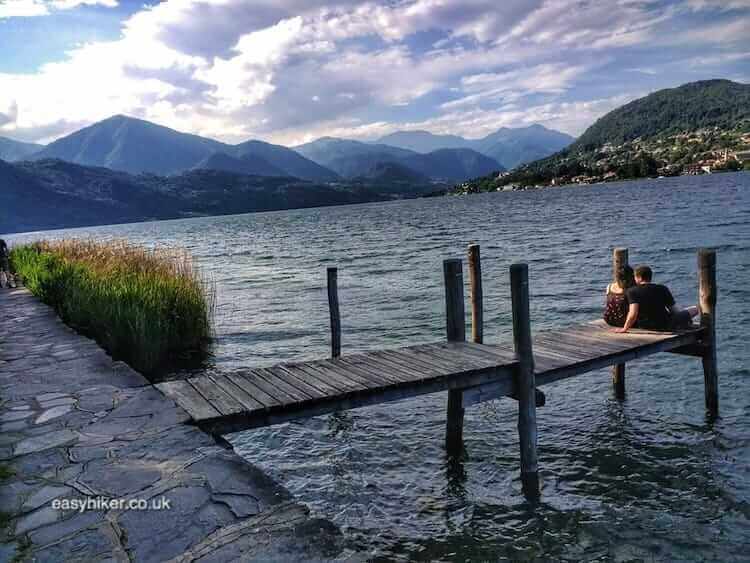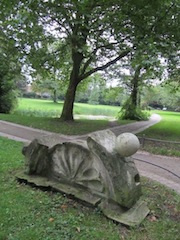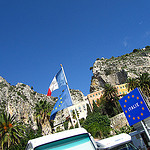Last week, we discovered that the “Cézanne Walk” in the artist’s home town of Aix-en-Provence is not the perfect route to finding out more about his paintings.
We shall be making up for that today, venturing a little out of town for a “pilgrimage of artistic discovery” to a place which is, more than anything in Aix itself, connected with the great man’s work.

No, don’t worry: we shall not schlep you up all the way to the Mont Sainte-Victoire. Cézanne, after all, made the mountain famous by painting it over and over again (depending on the way you count, between 30 and 80 times), not by climbing it – a feat he achieved only once, at the age of 56, when he had already dedicated a large part of his artistic life to watching the mountain from a distance.
Which is, so it seems, all he was really interested in. And this is why we will be walking to the spot from where he did most of his mountain-watching – passing, on the way, the house which he had built for the sole purpose of having this spot close at hand.

We start our walk on the corner of Boulevard Jean Jaurès and Avenue Pasteur, a quarter of a mile north from the city centre. Stay on Avenue Pasteur until you reach the town hospital, then turn right into Avenue de la Violette and immediately left into Avenue Paul Cézanne.
After another half mile or so, you will find the former home of the artist, now a museum, on your left hand side.
The entire area has, for some years, been part of Aix’s suburban sprawl, full of the pretty-but-unexceptional homes you would expect to find in the outskirts of a moderately prosperous town.
We know from contemporary photos of the place and a few sketches made by Cézanne himself that his house must have been among the very first in the area.
He moved here in 1902, having sold the Jas de Bouffan, the palatial residence he had inherited upon his father’s death. Following the sale, he was not only a wealthy man but also in need of a new place to work.
The house on the old Chemin des Lauves is where Cézanne came to paint nearly every single day in the final four years of his life.
But to find the spot from where he sketched the mountain which is so closely associated with his later work, we must continue our pilgrimage of artistic discovery up the Avenue Cézanne for another few hundred yards before making a sharp turn into a foot path on our left.

This spot (where we end our pilgrimage of artistic discovery), now called the Terrain des Peintres (the route is well sign-posted throughout), was carefully chosen by Cézanne: it marks the highest point on Les Lauves (the hill we have been climbing for the last hour or so).
Plenty of trees separated the clearing from the surrounding fields and meadows, giving Cézanne cover from the curious eyes of local shepherds and farmers. (Cézanne was not by nature a gregarious man.)
The spot has since been tastefully re-landscaped by the Aix city government – perhaps, one might argue, a little too tastefully. It looks very chic and modern, but no attempt was made anywhere on the site to recreate the look and feel of a scruffy grassland that this place would have possessed 120 years ago.

When Cézanne moved into his new atelier on the Chemin des Lauves, he had already painted the mountain from various spots and angles many times before, but the last group of 11 oil “Sainte-Victoire portraits” enjoys a special significance in the artist’s work.
The originals are nowadays scattered all over the world’s largest and richest museums, from Philadelphia to Saint Petersburg, but here the paintings all are assembled once again (as reproductions) for a family reunion, in the place where they were born.

Some of the paintings are very similar to one another save for some subtle differences, but there are also later, more experimental works where Cézanne mixed oil and watercolours. In these paintings, the familiar shapes of the Mont Sainte-Victoire almost appear to dissolve.

Cézanne came here whenever he could from 1902 until the fateful day in October 1906, when a storm surprised him while he was sitting at his easel.
Alone on the hill in the driving rain, he must have fainted at some stage, because, when two farm workers finally discovered him, he had already lost consciousness and had to be carried home on a stretcher.
The next morning, although feeling ill and weak, Cézanne started to work as usual in his atelier: it had always been his declared wish to die while painting. One week later, he was dead from pneumonia.
With the Terrain des Peintres, the city of Aix has found a dignified way of honouring its most famous son.
Information about the man and his work is unintrusively displayed, framed – like everything else on the site – by the view that dominates the spot and much of Cézanne’s artistic life.

The walk along the old Chemin des Lauves, meanwhile, also serves as a reminder that there is more to Aix than Cézanne.
As a bonus, you will discover – right at the start of the trail on Avenue Pasteur – this monument, a rare example for architecture from the period of the French Revolution.

The building was commissioned in 1794 as a private mausoleum for Joseph Sec, who – like Paul Cézanne’s father – had worked himself up from modest origins to become one of the town’s richest men.
There are various stone tablets with texts on display – the Republic’s new “Law Of Reason and Light” above the Ten Commandments which they are deemed to have surpassed – together with illustrations of biblical scenes as well as allegorical depictions of Freedom, Equality and Fraternity.
It is all a bit onerous to decipher, but the place has an almost magical quality, very much a piece of its period but also strangely suspended in time.

And here is something else which we found remarkable, something that has more to do with Cézanne: in the popular imagination, the Mont Sainte-Victoire is connected with Aix like Mount Vesuvius with Naples or the Sugarloaf Mountain with Rio de Janeiro.
But it was only when starting this walk when I realized that we had not spotted a glimpse of the Sainte-Victoire on our first day in town.
Even Cézanne himself appears to have forgotten about the mountain for long periods of his life, only becoming aware of its presence on a train ride from Aix to Marseille in 1877: he first mentions it as a “handsome motive” in a letter from 1878 in which he speaks about his travel experience.
Even during our walk, it will be a while before you catch your first sight of the most famous mountain in art history.
Where exactly? I will only tell you so much: it may have concealed itself from your view for a while, but once it comes out of its hiding place, it is not hard to spot.


